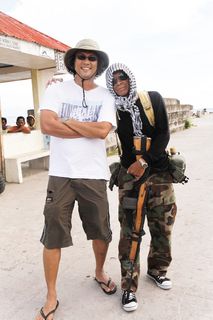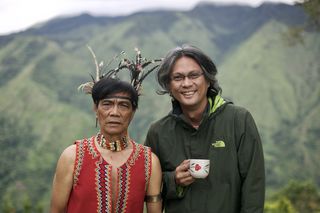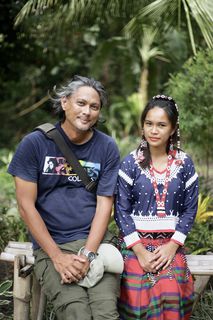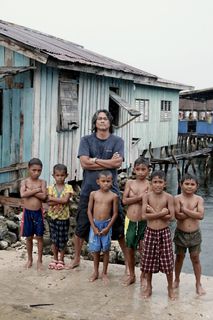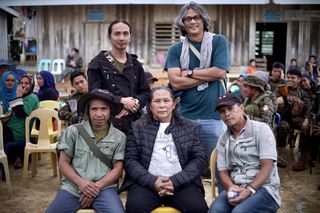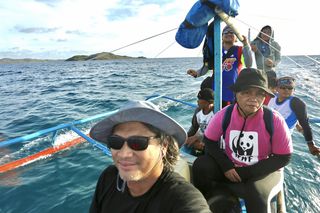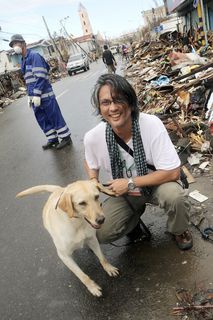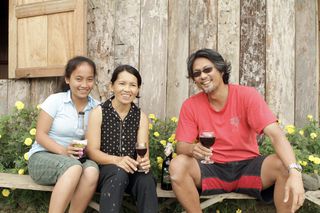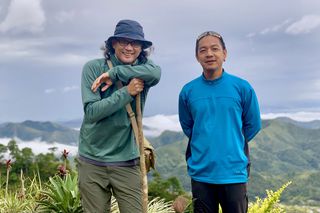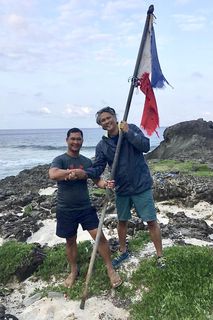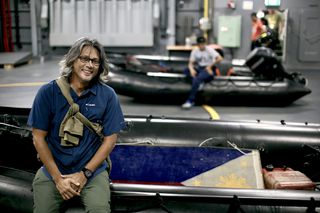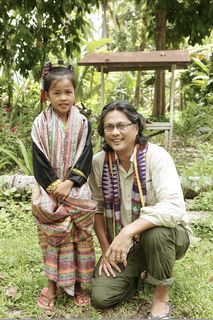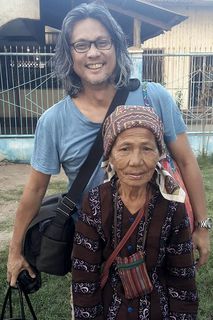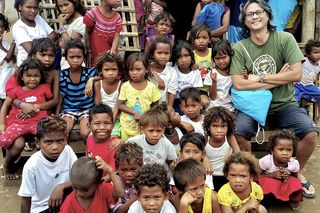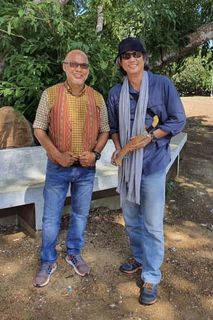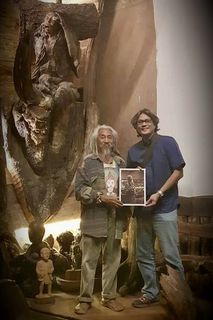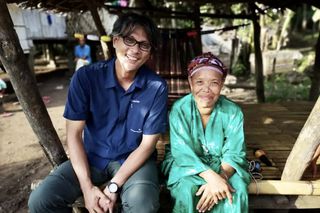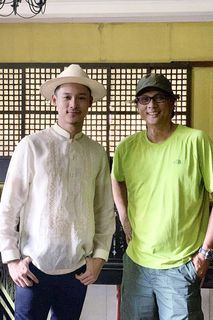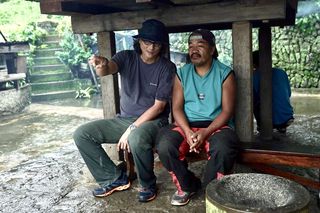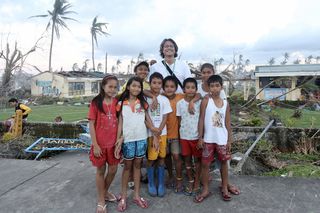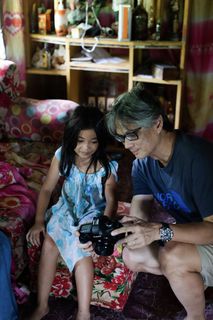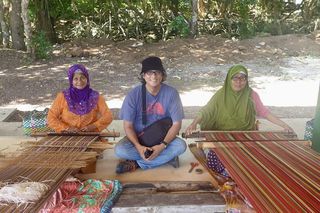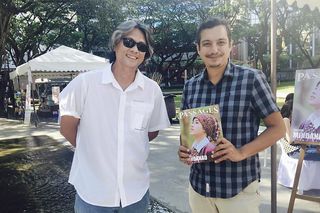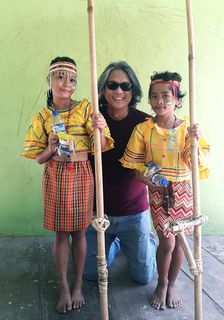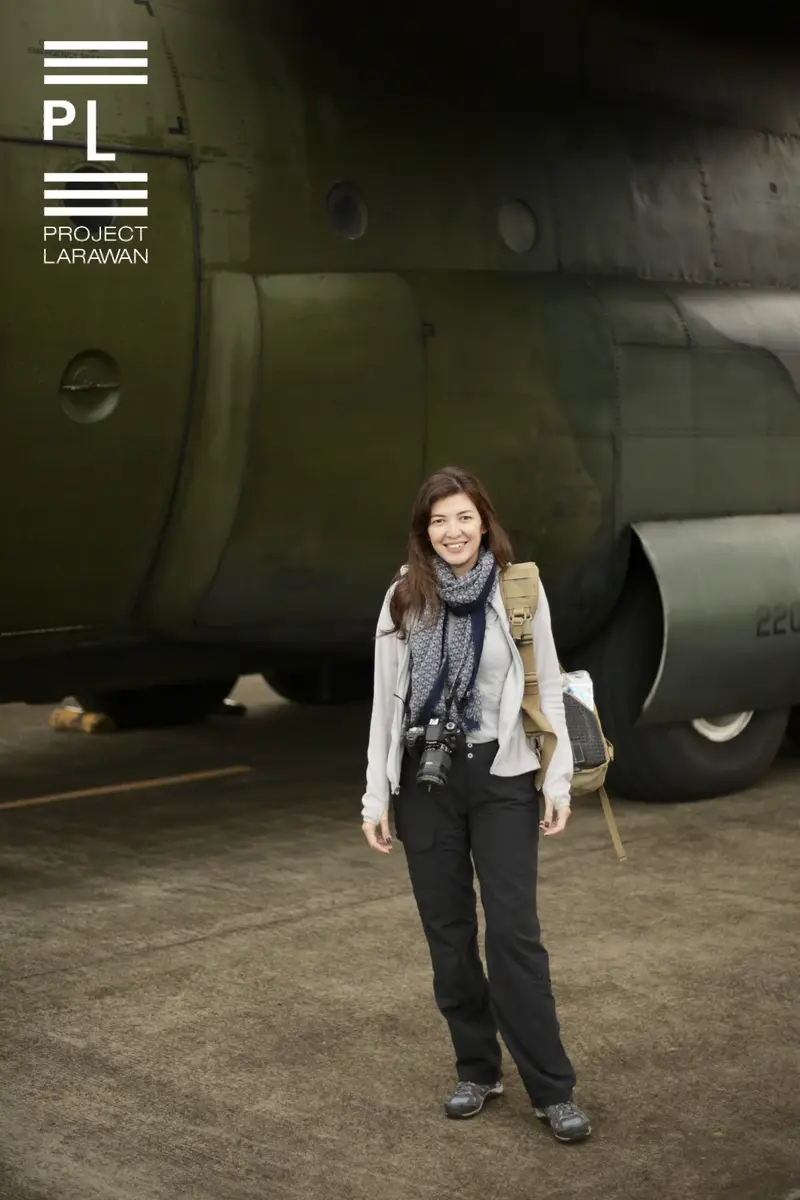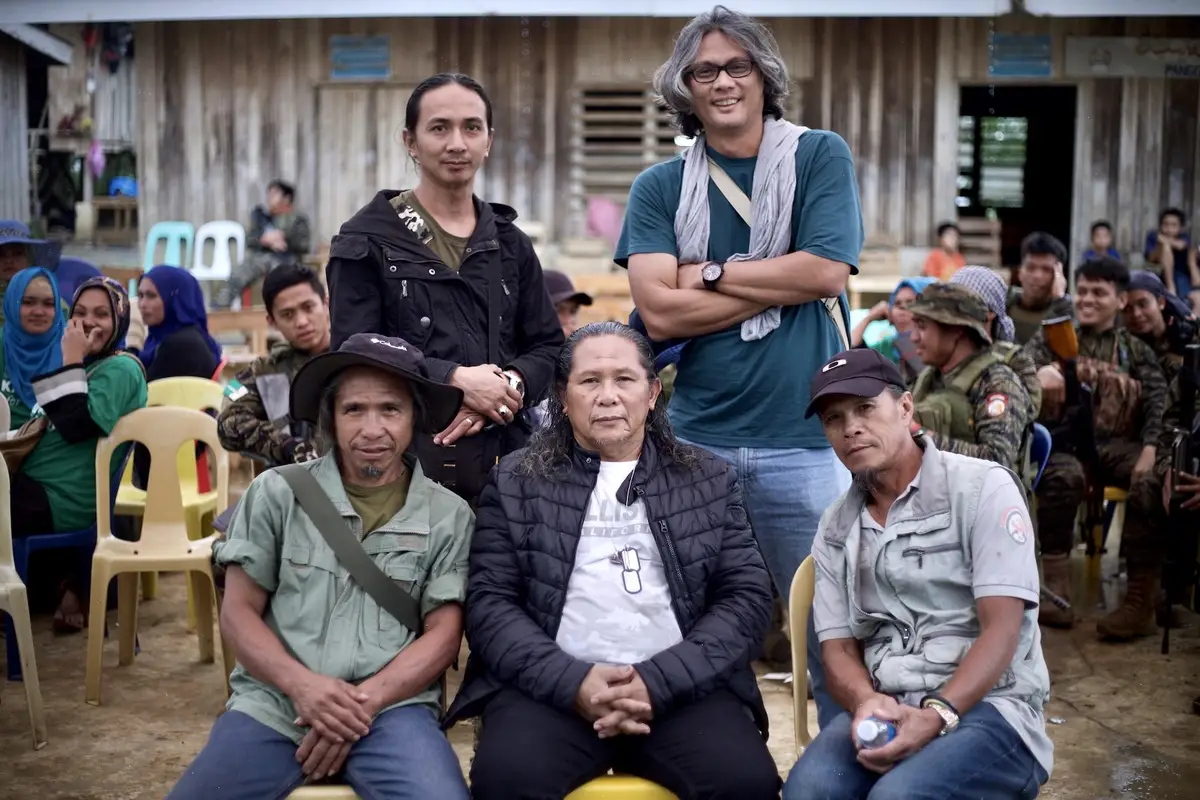Gabriel "Gabby" Malvar is a documentary filmmaker, writer, and photographer whose narratives are nuanced with unique, inventive perspectives to provoke an inquisitive look at his favorite subject, the Philippines. His National Geographic series Islands Insider (2012) is a travel guide with a bent towards history and culture. On the Brink (2016), a full-length feature, offers a balanced look at Oslob's whale shark tourism. Passages, a series of films on Mindanao features Tawi-Tawi (2015) and Sulu (2020) through a photographer's lens. Know Your North (2016 to present), an anthology on Northern Luzon, exposes the region through individuals' stories. Fields of Hope (2014) juxtaposes Tacloban's recovery with the hopes of a junior football team. Palawan: the Last Bastion (2019) and Coral Resiliency: the Marine Protected Areas of Taytay (2019) highlight the fragile state of the country's most popular island in the face of the demands on its resources by a growing population and the influx of tourists. Viajero Chronicles is a written collection of his journeys while Project Larawan consolidates images of the diverse souls he continuously encounters. Gabby entertains and informs with one hand, while he conserves traditions, culture and nature with the other.



Traveling the Extra Mile
The Philippine Star article - Aug. 18, 2017MANILA, Philippines - Between traveling to conflict-ridden areas and interviewing rebel leaders, Gabriel Malvar is no stranger to danger. Yet the Extra Mile Productions executive producer clarifies that he isn’t reckless. “Takot din naman ako. I take a lot of precautions,” says Gabriel. “Reckless is jumping off 300 feet to cliff dive. What I take are calculated risks.” He recalls a trip to Tugaya in Lanao del Sur in 2012, whose community was an entry for UNESCO, being an entire village of guilds with each household specializing in their own craft. Yet it was the height of the pyramid scam heist in the area, and all hell had broken loose in the city of Marawi, where he would need to pass through to get to Tugaya. “I was told, mali ‘yung timing mo, may gulo ngayon dahil sa pyramid scam.” But a story was beckoning, and Gabriel took his chances.
The filmmaker has always had an affinity for adventure. A former economist once immersed in the American corporate world, Gabriel left his day job and moved back to the Philippines, entertaining an idea of writing a book on his travels around the country — being away for nearly a decade before the social media age would largely accomplish that, the filmmaker hastens to add. Along the way, the book idea turned to documentaries, which later caught the attention of the likes of National Geographic, which green-lit the show Island Insider in 2011, putting the spotlight on Philippine travel destinations, through the eyes of the locals.
It makes sense — a nation of over 7,000 islands is bound to hold a myriad of tales if one navigates its crevices. Through his film outfit Extra Mile Productions, which Gabriel founded with wife Ginggay Hontiveros-Malvar, he and his crew tell compelling stories about the Philippines through rich narratives, beyond the usual glitz and glamour of tourism campaigns being peddled about the country. This means scouring for locations that fall just below the radar, and scratching beyond the surface for stories.
These days, however, the world’s regions are hardly uncharted territory. “In the time of the internet and smartphones, there isn’t a part in this world that isn’t being covered anymore,” Gabriel laments. Searching for parts unknown is a tall order, and so they turn to the people for stories.
The effort seems to have paid off. Extra Mile has two award-winning documentaries to its name, the Yolanda-themed Fields of Hope and On The Brink. On The Brink, a film spotlighting the whale shark tourism practices in places like Oslob and Donsol, won at the San Francisco International Ocean Film Festival. Their work affords the Extra Mile team intimate access into people’s lives, adding an authentic sensitivity to their work. Their latest documentary is on Tawi-Tawi, where they nosedive into the culture, showcasing the beauty of the island and its people amid the Bangsamoro tumult.
It’s this overarching theme of empathy and insight that translates to the rest of their work, including the Know Your North series, an array of web videos on the Cordilleras and their nearby regions. A film on the famed tribal tattoos, for example, profiled Kalawang instead of the famed Whang-Od.
“Kalawang is not from Kalinga, but he’s from Baguio,” Gabriel shares, adding that Kalawang “gives a scholar-like approach to the art of tattooing by marrying the old and the new techniques, and studying the different patterns done in different Cordillera regions.” By shifting the focus from the famous tattoo artist, it demystifies the celebrity surrounding Whang-Od, and allows us to zero in on tattoos as a facet of the Cordillera culture.
Gabriel knows that their content isn’t exactly targeted to millennials — most of whom tend to be fixated on the Instagram-worthy, not things below the surface. But he considers his team lucky in that they can turn more than a few heads to the screen. What makes for good storytelling, Gabriel contends, is showing human stories and the possibilities of change.
“The way we shoot, I’d like to think there’s an audience (for it). As long as you put out meaningful and compelling stories, papanoorin.”
Traveling advocate
GARAGE Magazine August 2012 - September MahinoWhen you find the opportunity to make a difference, have courage to make that leap.
At 45 years old, travel writer and nouveau videographer and producer Gabby Malvar had already experienced a full-fledged career working for a multinational company. He let it go, though, to cross off items from his bucket list.
“I was lucky that in my old job, I got assigned to other countries and thus got to travel. But when I was around 37, 38 years old, several people I knew, some of them my peers, passed away. I asked myself then, 'If I died tomorrow, what would I have to show?' Nothing. So I left my work.”
Already a viajero back in the 1980s, Malvar traveled around the country extensively in his teens. “At 17, 18, I would go biking in Antipolo,” he recalls. “I backpacked around in Mindanao: Iligan, Camiguin...That time, Mindanao was a different place and I could travel freely alone without worrying about security.” He also lived overseas for work: Thailand, the United States, Australia, and more. These work opportunities allowed him to dive into the cultural experiences each destination had to offer. “I learned white water kayaking in Thailand in the 1990s; at that time, that activity wasn't known or available yet in the Philippines. When I was living in Australia, I'd always go backpacking in New Zealand. When I got a brief assignment in Tokyo, I extended my stay to visit Kyoto.”
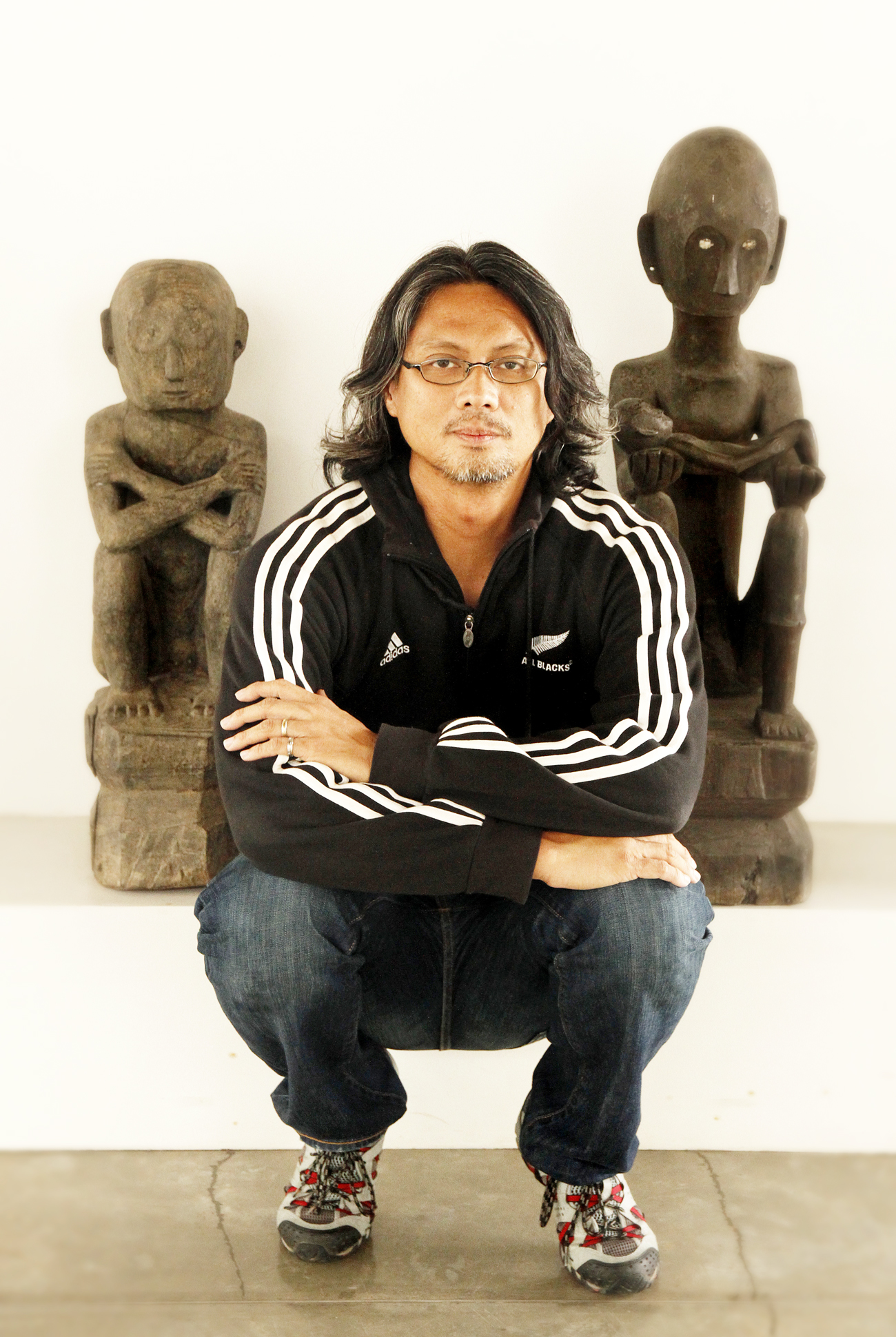 Gabriel Malvar
Gabriel Malvar
Malvar now writes for Travelife as a columnist for Viajero Chronicles. He is also the producer of Islands Insider, a travel documentary show that airs on the National Geographic Channel. Together with his partner Ginggay Hontiveros and a core group of staff, Malvar produces in-depth features on different travel destinations in the country and highlights the environmental, cultural, and heritage issues they face. “We aren't really in the business of video production; Islands Insider was our first venture into it,” he admits. “Lakasan lang ng loob: I just wanted to do something else, something that will make a difference.”
Gabby Malvar started writing about his travels for posterity's sake. “Memories are all in the mind; I wanted to articulate them through writing,” he says. But rather than simply jotting down the sites he has been to and what he did there, Malvar approached travel writing more seriously, as if he were penning articles for publishing. “I already knew my itineraries,” he explains. “What I wanted to put down were my experiences, feelings, fears, and fatigue during my travels, so when I'd read them in the future, the memories would come back clear.”
His method of memory-making and gathering is much more intense than that of a typical traveler: “I don't have to travel with other people. When I travel alone, I don't have to accommodate anyone else's schedule. I could wake up early, stay a little longer to take more pictures, go to other stops.” Especially during the '80s and the '90s when the internet was still in its nascence, Malvar had to be more adventurous in finding new experiences in his travels, armed only with a few Lonely Planet books for guidance. “Their stories didn't have pictures but they read like novels, and I wanted to make great travel literature too for the Philippines,” he says. After resigning from his job, he went backpacking around his personal favorite places — Patagonia, Easter Island, Macchu Pichu, Ushuaia — and then returned home to travel some more, living frugally on his savings.
After sending one of his writings to Travelife and getting it published, Malvar applied more discipline to his writing to meet the demands of a monthly column. If itineraries were already banal, mere descriptions weren't also enough; there always has to be something new in every story. “There are certain activities and traveling experiences in the Philippines that will feel the same for almost any traveler,” he admits. “If you're going to compare your white sand island experiences in Kalanggaman Island, Camiguin, and Tawi-Tawi, you'll write the same story for each destination. So what unique experiences should be highlighted in each place? That is always my goal with my writing.” Dining in Venice, for example, can become more than just a retelling of one's meal. “You close your eyes and listen to the Italian conversations around you, the clink of the glassware — what do they remind you of? If you're a travel writer, you shouldn't just be a mere tourist, absorbing everything. You should also be bringing something to the table, whatever your other interests are that you can relate to your story,” he advises.
Malvar's end goal for the Viajero Chronicles is to compile all his column entries into a book, though that plan has been temporarily shelved when Islands Insider came about. “The writing for the book is 80 percent done but last year, Ginggay suggested making the project more visual: 'Let's do a pilot of a show,'” he recalls. “So we put together a team, wrote an episode, and shot the pilot. We pitched the end product to National Geographic, it went through their Washington, D.C. head office, and they liked it, maybe because it is right up their alley in terms of what they want to focus on.” While some initial comments were critical of the nature and the pace of the show, Malvar stands by it. “Islands Insider is about local destinations but it isn't a travel show,” he explains. “It's about the places and the issues they face, the stories integrated with advocacies that the team believes in. Yes, it's more fun in the Philippines but it's not all just about fun. There has to be a balance between tourism and preservation.”
Since Islands Insider, Malvar and Hontiveros have taken on other videography projects, such as the Manila Hotel Centennial Ball video, which documented the grand hotel's history. There is also another travel show in the works as well as a cooking show — Viajero Chronicles the book seems set to wait a little bit more.
“Age and maturity have helped my writing, but young people now are much more empowered because of the internet,” Malvar says. “They should take that avenue for self-expression but they should also hone their skills. I'm not saying my work is perfect, but it never hurt anyone to acquire new skills and keep improving them.” As for the career shift that changed his life, he says, “Everyone gets to that point where they want to make a change, on a certain age and under certain circumstances. Should you find that opportunity, have the courage to take it.”

